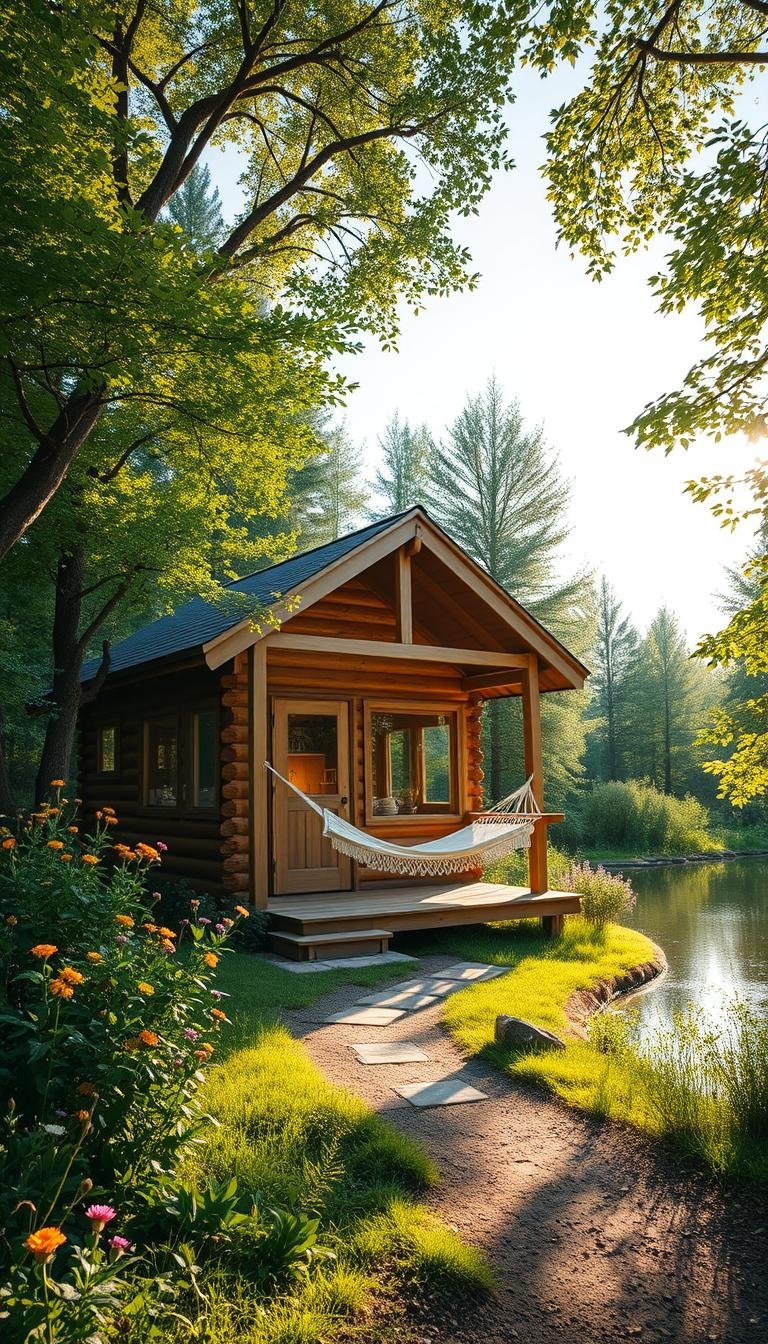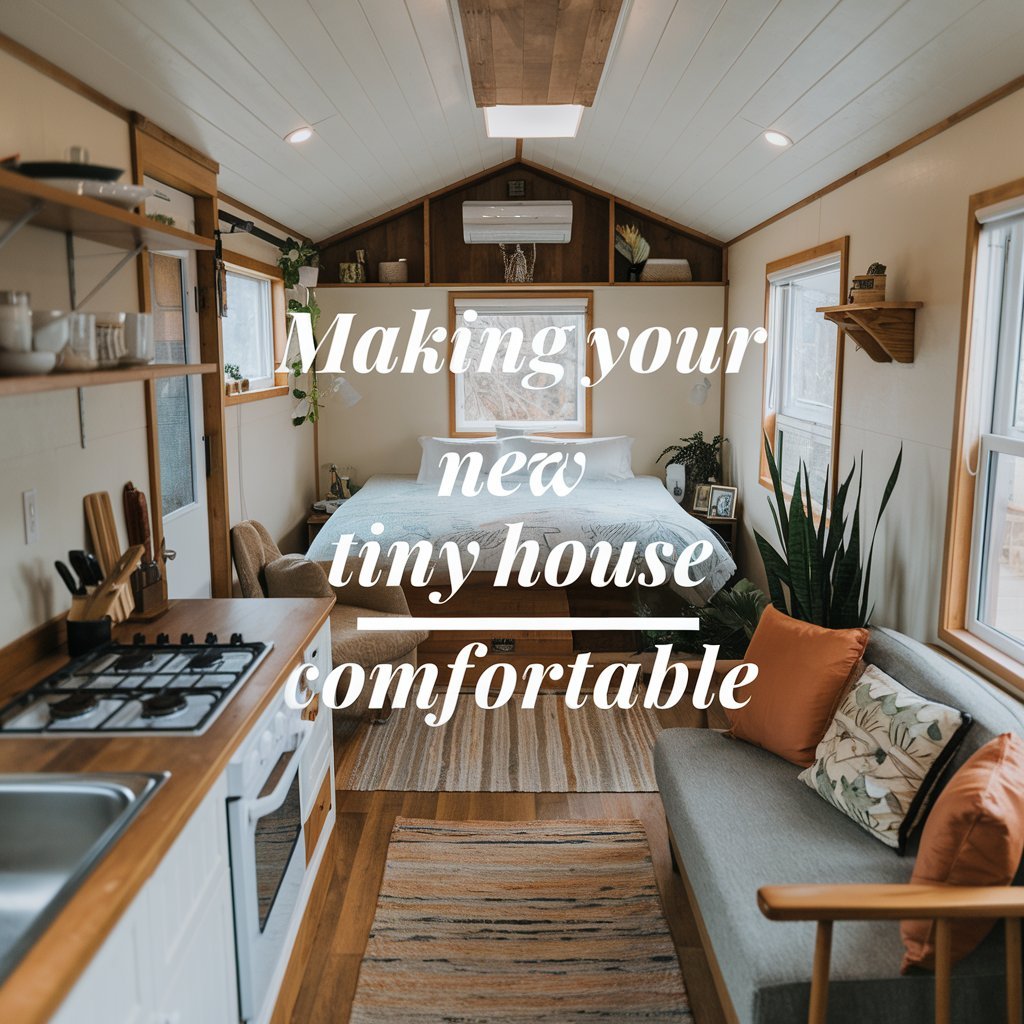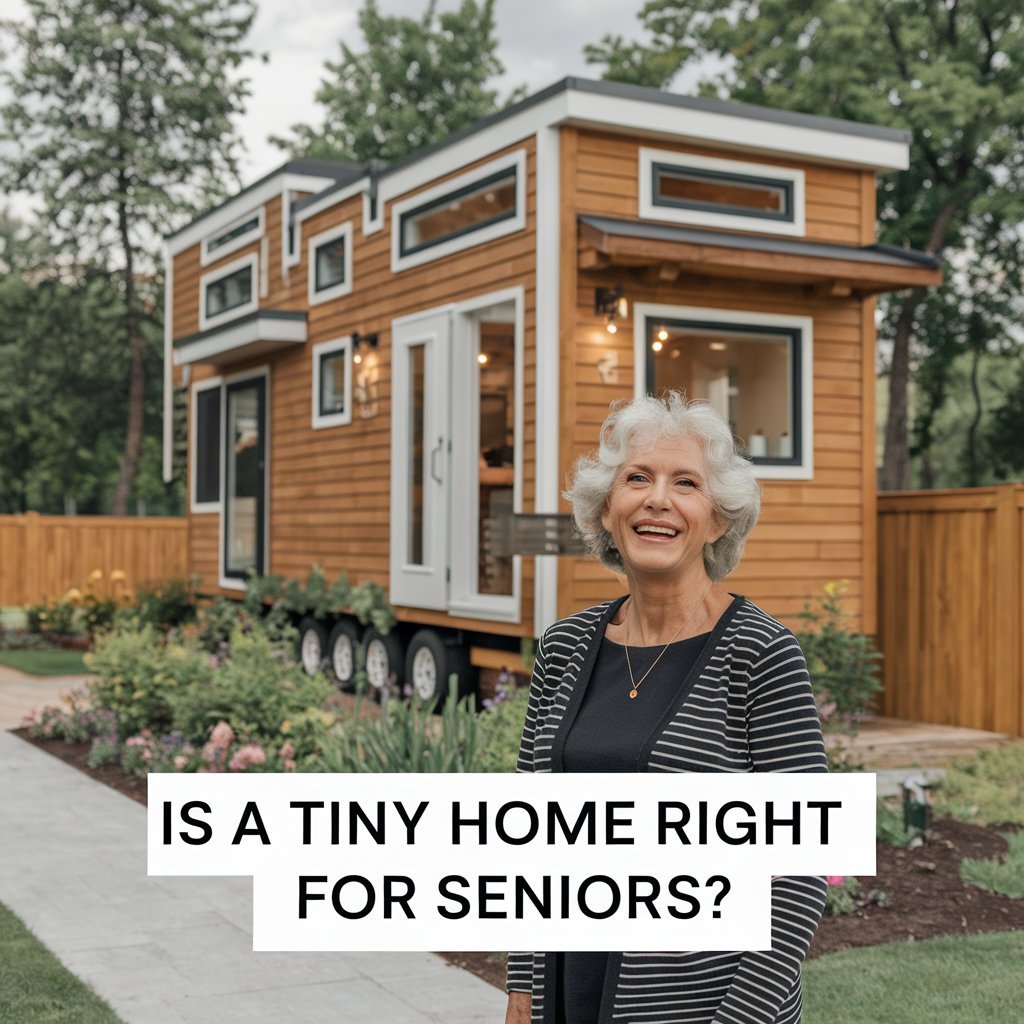Choosing a smaller home doesn’t mean sacrificing your bond with the outdoors. Many Americans are discovering that tiny house designs create unique opportunities to blend indoor comfort with outdoor exploration. These compact spaces force intentional choices about what truly matters – often leading residents to prioritize sunlight, fresh air, and scenic views.
Modern tiny house layouts frequently feature large windows, fold-out decks, and multipurpose storage. These elements make it easier to enjoy surrounding landscapes while maintaining practical living areas. Architects specializing in micro-homes emphasize designs that “disappear” into natural settings rather than dominate them.
Psychological studies show that proximity to green spaces reduces stress and boosts creativity. Smaller house footprints naturally encourage residents to spend more time outside gardening, hiking, or simply relaxing under open skies. This shift from square footage to experiential richness often leads to greater life satisfaction.
Key Takeaways
- Compact homes foster stronger relationships with outdoor environments
- Smart design maximizes natural light and landscape integration
- Small-space living encourages intentional use of surrounding nature
- Architectural choices can blur boundaries between indoor/outdoor areas
- Location selection dramatically impacts nature accessibility
- Simpler layouts promote mindfulness about resource consumption
Embracing the Tiny House Lifestyle
Living small isn’t about sacrifice—it’s a deliberate choice for freedom. The tiny house movement centers on intentionality, where every square foot serves a purpose. This approach transforms how people interact with their environment and priorities.
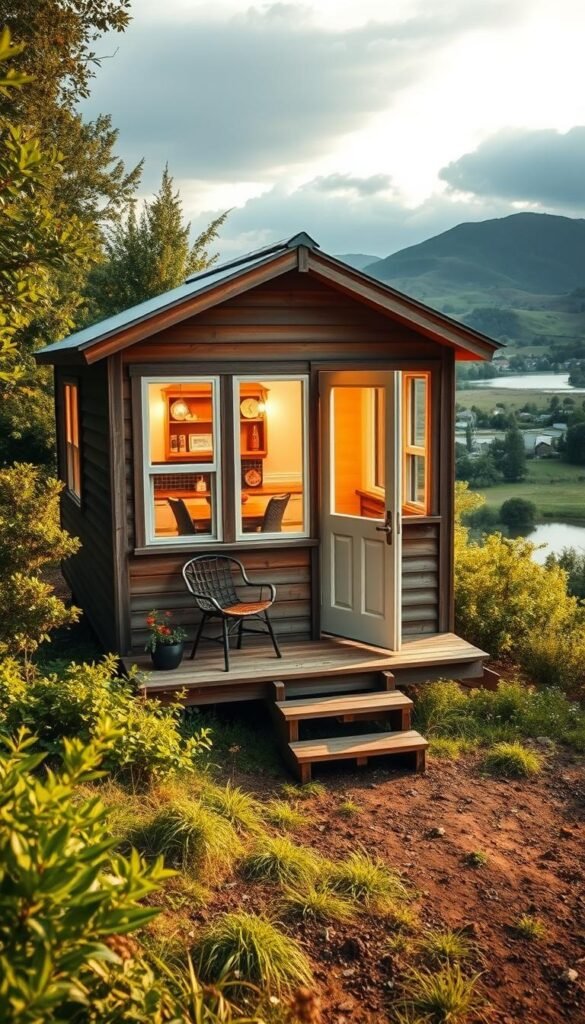
The Philosophy Behind Minimal Living
Minimalism in tiny house design starts with eliminating excess. By focusing on essential things, residents reduce clutter—both physical and mental. Studies show smaller spaces lower stress by cutting daily decisions about possessions.
Defining Freedom, Simplicity, and Adventure
The lifestyle offers three liberating pillars: time, mobility, and finances. Smaller mortgages mean working less to maintain a house. Wheel-ready designs let owners relocate effortlessly. This flexibility fuels exploration while promoting eco-conscious living.
Simplicity extends beyond square footage. It influences energy use, social habits, and long-term goals. Many adopters report higher happiness levels after swapping material accumulation for meaningful experiences. Quality of life often improves when possessions no longer dictate routines.
Understanding Tiny Houses: Definition and History
The concept of tiny houses blends historical simplicity with contemporary design innovations. Officially defined as dwellings under 400 square feet by International Residential Building Codes, these compact structures prioritize efficiency over excess.
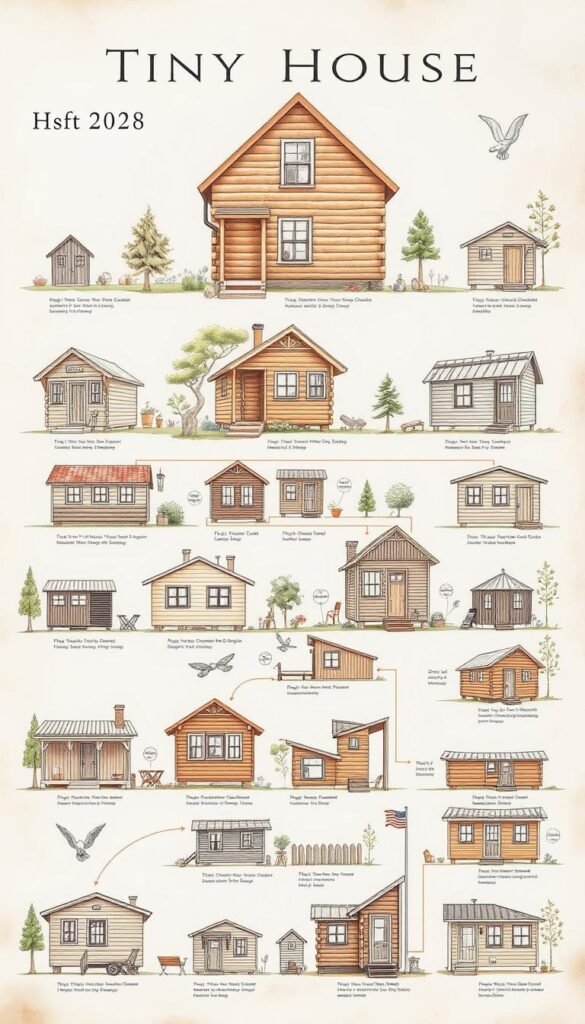
What Are Tiny Houses?
Modern tiny houses trace their roots to Henry David Thoreau’s 1845 experiment in a 150-square-foot cabin. His Walden Pond retreat demonstrated how small space could foster deep connections to environment and self. This philosophy evolved into today’s practical home solutions that maximize functionality through clever layouts.
A Brief History of the Tiny House Movement
Architect Sarah Susanka reignited interest in compact living through her 1998 book The Not So Big House. Jay Shafer then propelled the modern tiny house movement with his 2000 designs and the 2002 Small House Society founding. Economic shifts—including the 2008 housing crash—pushed many Americans to reconsider oversized mortgages.
Recent data shows 63% of tiny house owners carry no home debt. This financial freedom, combined with pandemic-era remote work trends, continues driving interest in sub-400 square foot living. The movement’s growth reflects changing priorities around sustainability and life quality.
Benefits of Living in a Tiny Home
Opting for compact living spaces unlocks surprising advantages that extend beyond square footage. Tiny homes challenge traditional housing norms while delivering tangible financial benefits and lifestyle improvements. Let’s explore how downsizing can upgrade your quality of life.
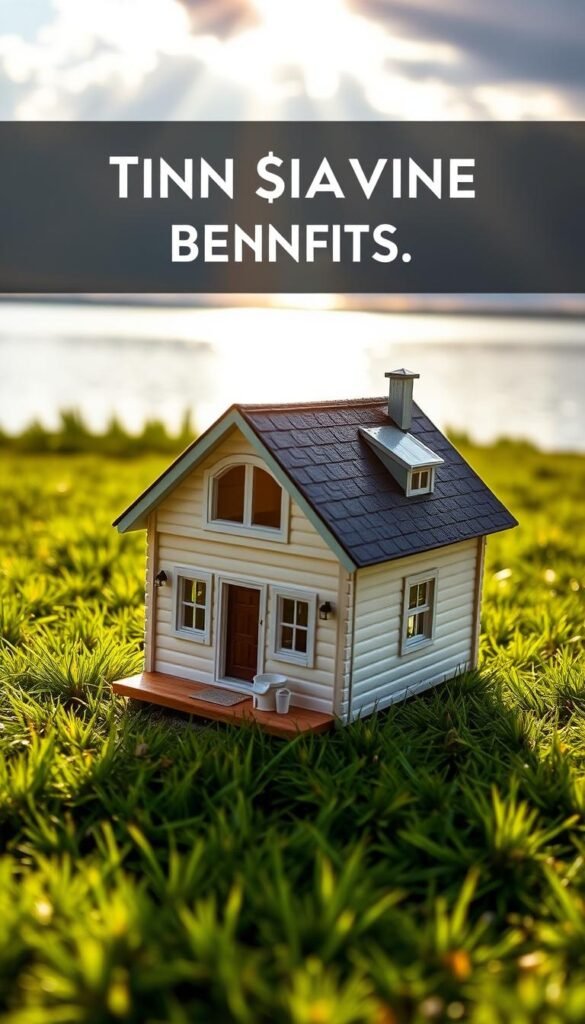
Financial Freedom and Reduced Costs
The average tiny house costs 90% less than standard American homes. With prices between $30,000-$60,000 versus $300,000+ for conventional houses, owners bypass decades of mortgage debt. Three-quarters achieve complete homeownership upfront—a rarity in today’s housing market.
Monthly expenses tell an equally compelling story. Energy bills often drop below $20 due to:
- Smaller spaces needing less heating/cooling
- Efficient appliances reducing power consumption
- Simpler structures requiring minimal repairs
Simplicity, Minimalism, and Health Benefits
Living with fewer things creates mental clarity and physical ease. Compact layouts naturally limit clutter, cutting cleaning time by 40% according to recent surveys. This simplicity reduces stress hormones while freeing hours for hobbies or outdoor activities.
The financial freedom from lower housing costs also impacts well-being. Without massive debt burdens, residents report better sleep quality and stronger community connections. Many redirect saved money toward travel, education, or sustainable living investments.
Staying connected with nature in a tiny-house lifestyle
Tiny homes redefine how we interact with our surroundings by blending built environments with wild spaces. Architects and residents alike prioritize designs that erase barriers between compact interiors and expansive landscapes. This approach transforms every square foot into a launchpad for outdoor engagement.
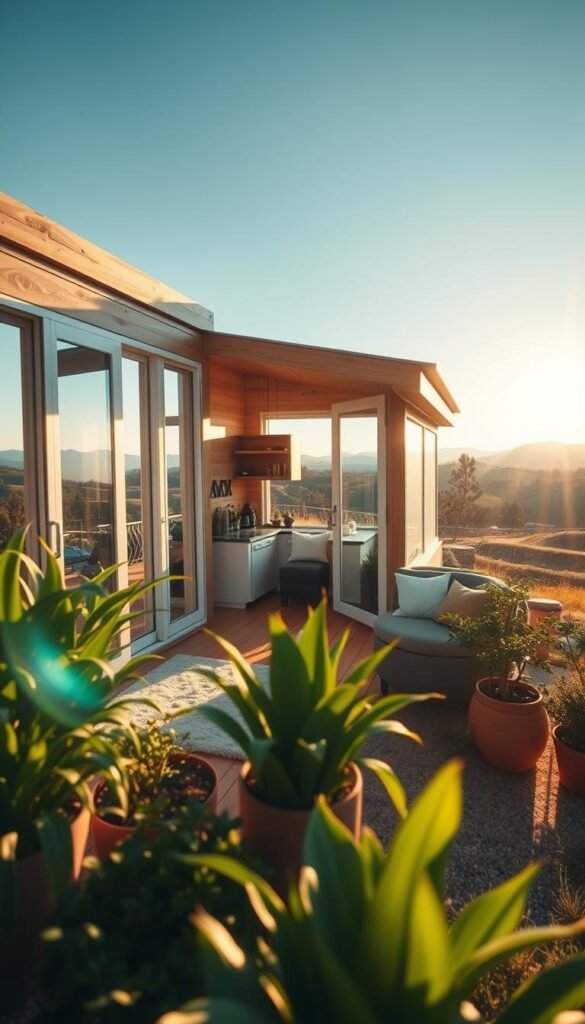
Integrating Indoor and Outdoor Spaces
Clever layouts treat patios and decks as functional living space extensions. Fold-down tables convert window ledges into dining areas, while sliding glass doors triple usable areas during warmer months. Over 78% of tiny house living enthusiasts report using outdoor kitchens weekly, according to a 2023 Micro-Home Trends Report.
Mobility plays a crucial role in this dynamic. Many compact dwellings feature wheels or lightweight frames, letting owners chase ideal climates. A lakeside retreat in summer becomes a mountain cabin by fall—all without sacrificing house living comforts.
Designing for a Natural Connection
Strategic window placement turns forests and sunsets into ever-changing wall art. Skylights above sleeping lofts frame starry skies, while east-facing clerestory windows greet dawn. These techniques maintain living space efficiency while amplifying nature’s presence.
Psychologists note that residents with visual access to green spaces show 31% lower stress markers. Compact homes achieve this through:
- Retractable walls merging living rooms with meadows
- Built-in planters nurturing herbs beside kitchen sinks
- Weatherproof storage for hiking gear near entryways
This intentional way living bridges shelter and wilderness, proving small footprints can deliver grand experience.
Eco-Tourism and Sustainable Practices in Tiny House Projects
Tiny house projects are reshaping eco-tourism, with Airbnb reporting a 109% surge in bookings for these compact homes since 2021. Travelers increasingly seek low-impact experiences that blend comfort with environmental stewardship. This demand drives innovation in sustainable construction and renewable resource management.
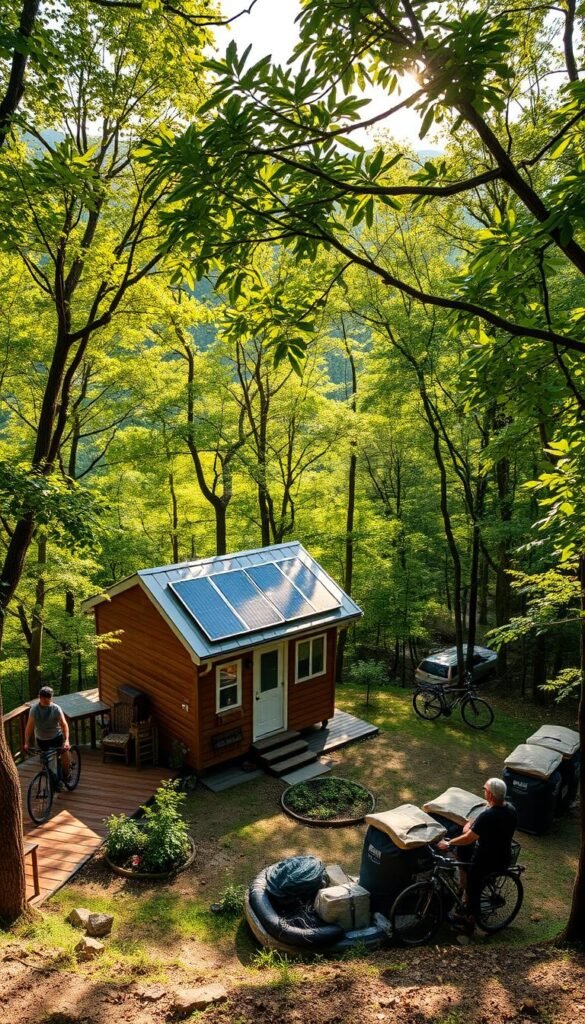
Leveraging Eco-Friendly Materials and Construction
Builders now prioritize materials like thermally modified wood—a durable alternative to plastic composites. These choices reduce landfill waste while withstanding harsh weather. Local sourcing cuts transportation emissions, with 68% of projects using materials from within 50 miles.
Advanced framing techniques minimize lumber use without sacrificing structural integrity. Prefabricated components further decrease construction debris. These methods prove that eco-friendly building can be both practical and cost-effective.
Renewable Energy Solutions and Water Efficiency
Solar panels power 92% of off-grid tiny homes, according to 2023 energy audits. Modern systems store excess energy in lithium batteries, providing reliable electricity even during cloudy days. Backup generators serve as fail-safes for extreme weather events.
Water conservation features include:
- Rainwater catchment systems filtering 500+ gallons monthly
- Greywater recycling for irrigation needs
- Composting toilets reducing freshwater consumption by 80%
These innovations let travelers enjoy modern comforts while preserving natural resources. As sustainability becomes central to vacation choices, tiny house developments set new standards for responsible tourism.
Maximizing Functionality: Design, Energy, and Efficiency
Compact living demands innovation at every turn. Architects and residents collaborate to create tiny house layouts that feel spacious through strategic planning. Every inch serves multiple purposes, proving that smart design trumps square footage.
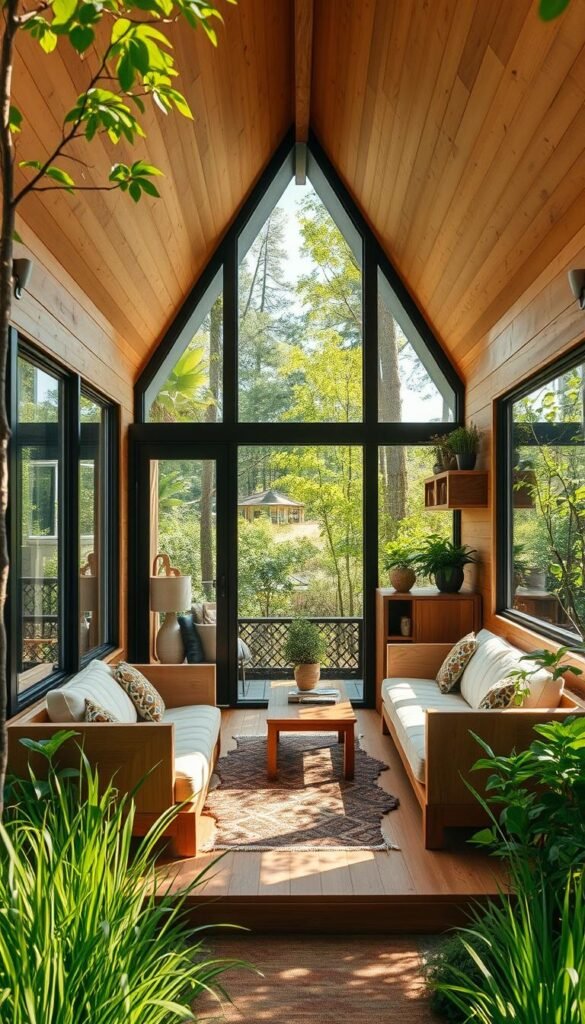
Smart Space Optimization and Multifunctional Furniture
Convertible elements dominate modern tiny house interiors. Beds fold into walls to reveal dining nooks, while staircases double as dresser drawers. A 2023 survey found 89% of owners use at least three multifunctional furniture pieces daily.
Vertical storage solutions maximize limited floor space. Floor-to-ceiling shelving holds kitchenware above fold-out desks. Magnetic knife strips and ceiling-mounted bike racks keep essentials accessible yet out of the way.
| Feature | Traditional Home | Tiny House |
|---|---|---|
| Average Energy Use | 10,632 kWh/year | 5,847 kWh/year |
| Monthly Utility Cost | $135 | $74 |
| Active Storage Zones | 4-6 | 12-15 |
Innovative Storage and Energy-Efficient Installations
Hidden compartments under floors and behind mirrors add surprise storage. Retractable countertops expand kitchen workspace, then disappear when not needed. These solutions maintain clean sightlines crucial for small home aesthetics.
Energy-smart installations slash power bills. Mini-split HVAC systems target specific zones instead of whole house areas. Combined with solar arrays, 62% of tiny homes achieve full energy independence according to renewable energy reports.
LED lighting and tankless water heaters further reduce consumption. Smart thermostats learn routines to optimize energy use. These technologies prove efficiency and comfort coexist in compact living spaces.
Tiny House Communities and Social Connection
Shared values form the foundation of thriving tiny house communities. These intentional neighborhoods cluster compact homes around communal spaces, creating ecosystems where sustainability and collaboration flourish. Residents benefit from collective resources while maintaining private sanctuaries.
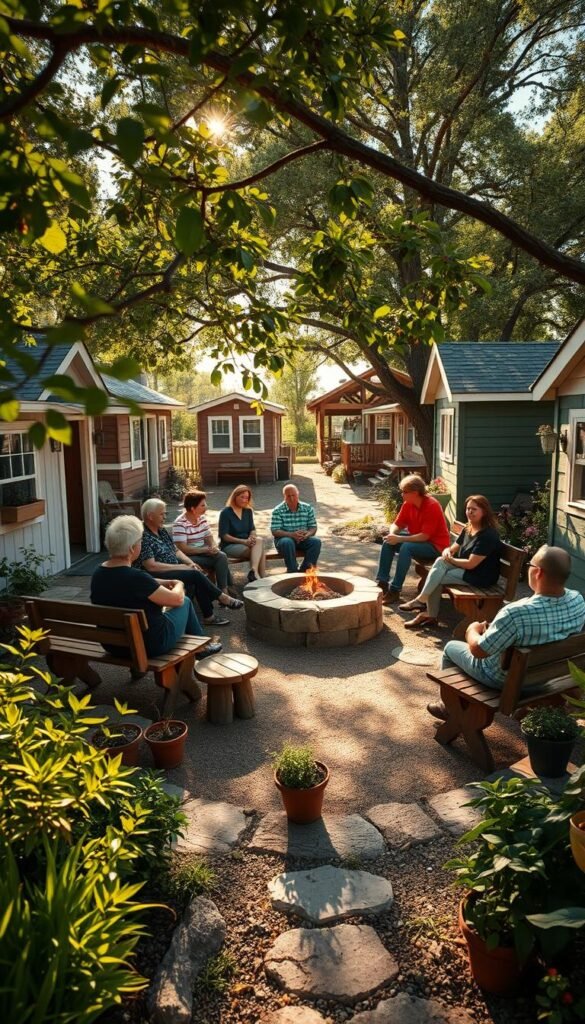
Building Supportive, Like-Minded Communities
Shared facilities become social hubs in these micro-communities. Co-working spaces host remote workers by day, transforming into yoga studios at dusk. Communal kitchens spark impromptu potlucks, while tool libraries let neighbors borrow lawnmowers instead of buying them.
Zoning innovations enable these developments. Some states now classify tiny house clusters as RV parks, easing legal hurdles. This flexibility allows diverse models—from urban co-housing to rural eco-villages—to meet local needs.
Resource Sharing for a Sustainable Lifestyle
Bulk purchasing programs slash grocery costs by 30% in many communities. Shared solar grids power multiple homes, cutting energy bills further. Car-share networks reduce vehicle ownership, with 68% of residents reporting decreased transportation expenses.
These arrangements foster unexpected connections. A retired carpenter might trade workshop access for gardening help, creating bonds through skill exchanges. The system proves that shared resources strengthen both budgets and relationships.
Conclusion
The tiny house revolution reimagines modern living by proving less space can mean more freedom. These compact homes offer financial relief, environmental benefits, and stronger community bonds—prioritizing experiences over square footage.
Common challenges like zoning laws or storage limits now meet creative solutions. Foldable furniture and renewable energy systems turn perceived limitations into opportunities. This new way of life reshapes how we value time, resources, and nature.
Adopting a minimalist lifestyle encourages intentional choices about possessions and energy use. Many discover their values align with smaller ecological footprints and debt-free home ownership. The movement’s growth signals a cultural shift toward sustainable living practices.
As housing costs rise, tiny houses emerge as viable solutions for affordable, eco-conscious homes. Their design philosophy—maximizing function while minimizing waste—could redefine urban planning and environmental conservation. This new way forward proves meaningful life experiences often thrive in thoughtfully designed small spaces.

